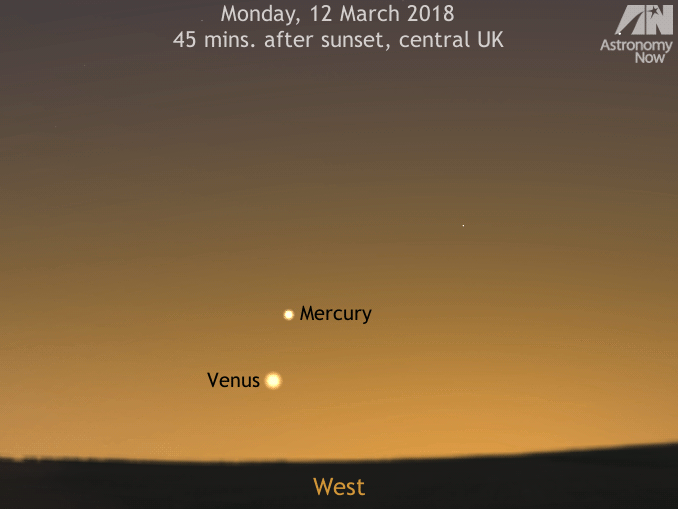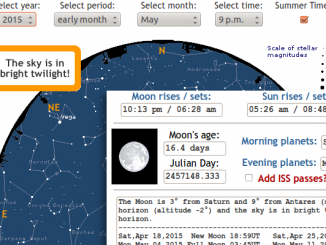
For observers in the British Isles, the best time to look for Mercury from 12 –20 March is about 45 minutes after sunset (hint: you can use our interactive online Almanac to calculate sunset times for your location) when the planet remains high enough above the horizon to be seen yet twilight is not too bright. To ensure success, you will need to find a location that offers a level horizon due west unobstructed by houses or trees.
The task of spotting Mercury is currently made somewhat easier due to its close proximity to sibling planet Venus. From 12 –20 March, the two planets change configuration with respect to the horizon, but their angular separation hovers close to 4 degrees. This means that over the next eight days, once you locate bright magnitude -3.9 Venus, Mercury lies in the same field of view of typical 7× to 10× magnification binoculars.
Mercury is brightest and hence easier to spot over the next few nights. Shining at magnitude -0.6 on Monday, 12 March, the planet fades to magnitude zero by 16 March. By the time the slender crescent of a young Moon arrives on the scene on 18 March, Mercury will be magnitude +0.4.
If the sky remains clear 45 minutes after sunset on Monday, 19 March, don’t miss an attractive conjunction of the 2¼-day-old crescent Moon, Venus and Mercury all encompassed by little more than half the span of an outstretched hand at arm’s length.



